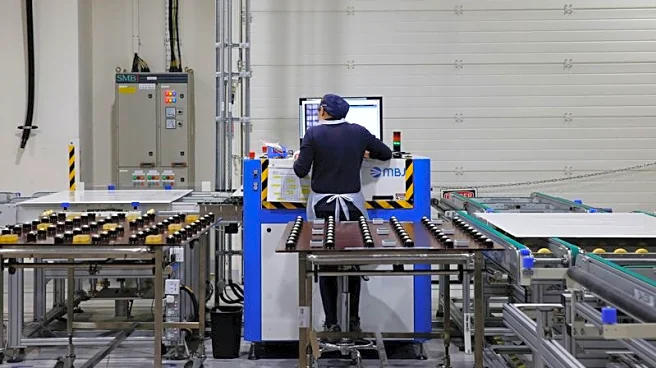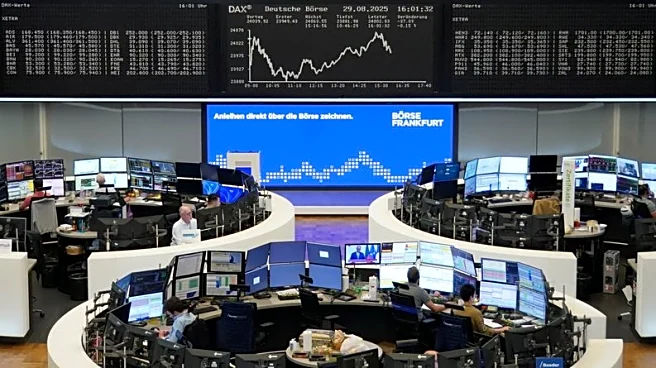What is the story about?
What's Happening?
In the third quarter of 2025, Asia's tech sector is experiencing contrasting dynamics. While U.S. trade policies and Wall Street volatility have impacted global supply chains, China's manufacturing resilience, indicated by a 50.5 PMI reading in August, has provided some optimism. This situation requires a nuanced approach to sector rotation and sentiment analysis as investors navigate regional dynamics and capital flows. China's PMI data, signaling a rebound in manufacturing activity, has driven strategic allocations into high-value tech sectors like semiconductors and AI infrastructure. Meanwhile, Hong Kong's tech stocks have shown resilience, contrasting with declines in Japan and South Korea's tech sectors.
Why It's Important?
The current state of Asia's tech sector highlights the complex interplay between global economic policies and regional market dynamics. China's manufacturing resilience offers a potential growth avenue for tech sectors, particularly in semiconductors and AI, which are critical for technological advancement and economic growth. The divergence in market performance across regions underscores the importance of strategic investment decisions based on macroeconomic indicators like PMI. For U.S. investors, understanding these dynamics is crucial for making informed decisions about international tech investments, which can impact portfolio performance and economic relations.
What's Next?
Investors are likely to continue focusing on PMI-driven sector rotation, allocating capital to sectors with strong growth signals while managing exposure to more volatile markets. The anticipated U.S. Federal Reserve rate cut in September could further influence investment flows, potentially benefiting Asia's high-growth tech stocks. As the global economic landscape evolves, investors will need to remain vigilant and adaptable to capitalize on emerging opportunities and mitigate risks.
AI Generated Content
Do you find this article useful?
















